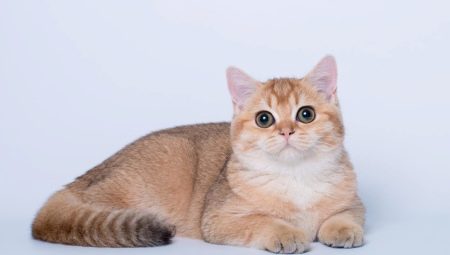Golden British cats are pets loved by many. They earned their popularity due to the unusual color of fluffy wool. It is important to note that the golden British are a rare rather than common phenomenon. Therefore, if you want to become the owner of an unusual pet, then you should pay attention to such cats.
Characteristic
British cats, whose fur is colored in various shades of gold, are considered the rarest, most valuable and expensive. It is important to remember that a real golden Briton will by no means have gray spots on his coat. If such inclusions are present, then you should immediately refuse to buy an animal. Such marks are considered defective and significant.
It is also important to remember that real Golden Brits have eyes that can be exceptionally green. If you notice that the cat's eyes are of a different color, then such an animal will also not be considered a pure golden British.
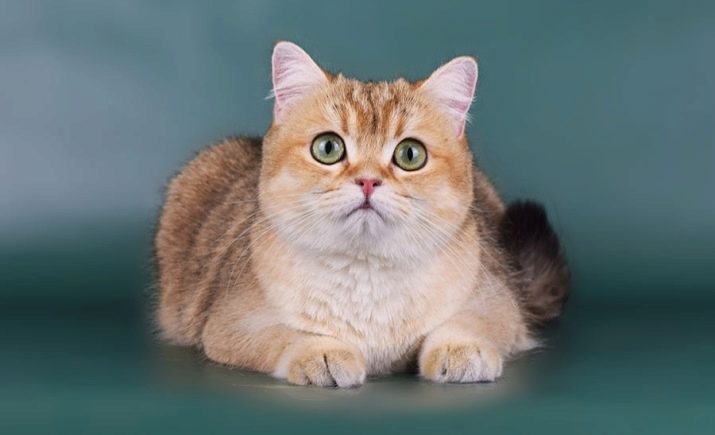
The coat of this breed is quite long, not too dense and thick with the presence of double undercoat. In addition, it is important to consider that the brighter the golden hue in the color, the more purebred and thoroughbred the cat is. Moreover, the undercoat should be painted in an apricot shade. If it is gray, then the animal is rejected.
The eyes and nose of the cat should have an unusual, but pronounced dark eyeliner, and the pillows on the legs should be painted in charcoal black.
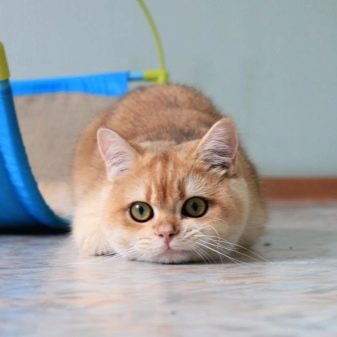
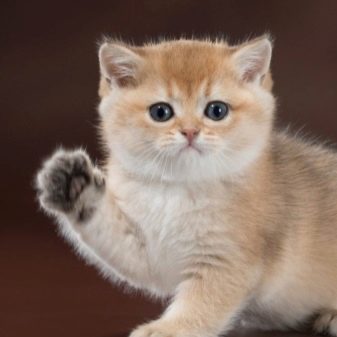
A distinctive feature of such animals is the fact that they breed quite poorly. This explains their high cost and rarity. In nature, such cats are also quite few.That is why it is very difficult to find 2 purebred individuals for crossbreeding and breeding. In addition, the offspring of such Britons are developing rather slowly and difficultly.
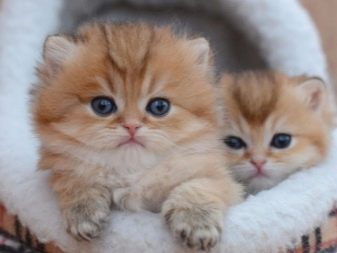
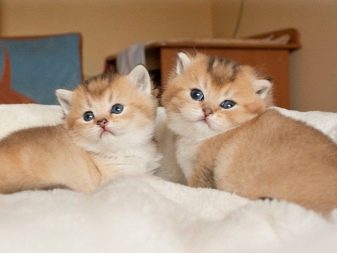
Kinds
Golden British - this is a special color for cats. However, it is not integral - there are several subgroups of golden cats:
- shaded;
- veiled;
- tabby (which includes ticked, spotted, striped and harlequin).
It should also be noted that cats with a veiled, shaded and ticked color are also called chinchillas.
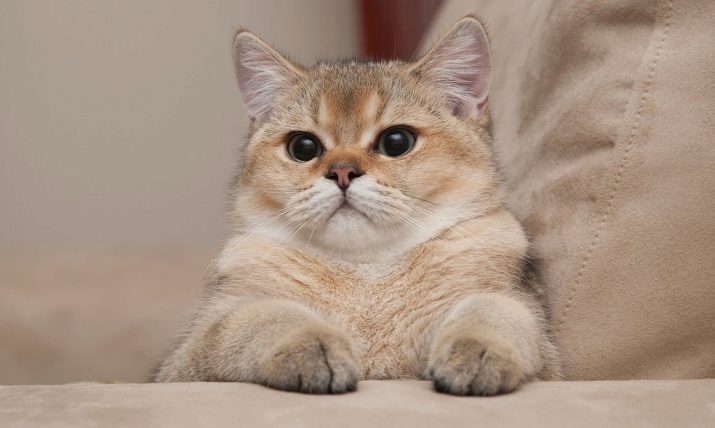
Consider each of the above types in more detail.
- Shaded British. This cat has a rather original color. So, the lower part of the hairs on the wool is colored in golden and apricot shades. A characteristic feature is the presence of the so-called white collar. This group is quite common in the British breed of gold color.
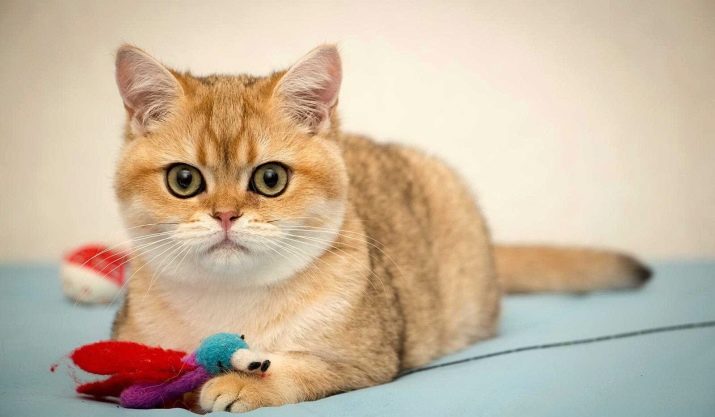
- Veiled. This subgroup of golden British is called chinchilla. This name is due to the fact that a small part of the hairs of the cat's hair has a so-called plaque. This variety of the British is considered the rarest, and therefore is the most expensive.
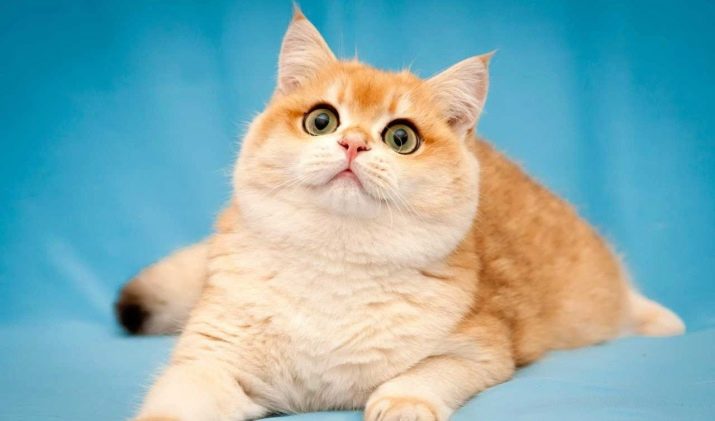
- Tabby. This color group includes several variations: ticked, spotted (or leopard), striped and marble. The main feature is the heterogeneity of the color, the presence of a pattern on the wool.
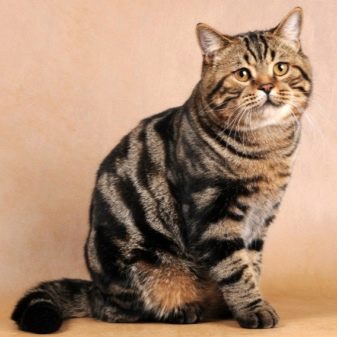
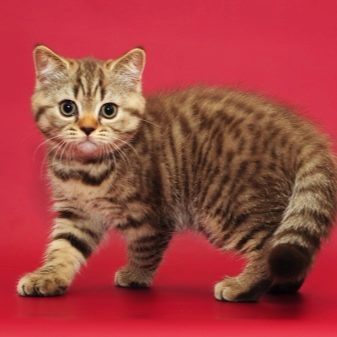
Care Rules
Care for the kitten should begin in the very first days of his appearance in the house. During this period, the animal adapts and gets used to new environmental conditions, to people.
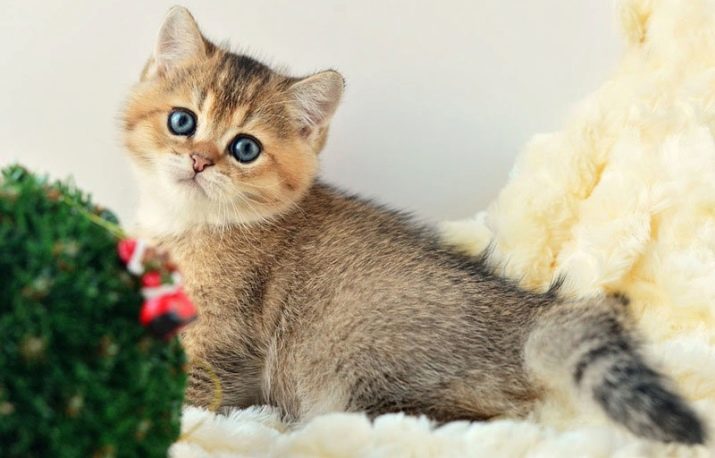
Therefore, special attention should be paid to the animal at this stage.
- You should not constantly hold the kitten in your arms, try to catch it or stroke it. Try to constantly be near the animal and talk to him gently, do not show aggression or discontent.
- Position the toilet, as well as plates of water and food as close to each other as possible (later they can be arranged). Thus, you minimize the amount of movement of the cat, and he will quickly get used to the new conditions.
- Lock doors, windows and cabinets.
- Carefully move around the apartment and sit on sofas, chairs, etc. Pay attention to where the kitten is currently located.
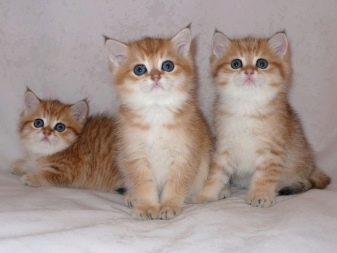
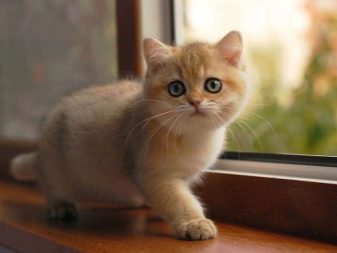
As for the diet, in the early days it is necessary to feed it in the same way as the animal was fed by previous owners. Gradually, other foods can be added to the diet. So, the animal can be fed with special dry food or natural products.
At the same time, it is worth remembering that food for a cat should always be fresh and cooked separately.. Do not give the pet leftovers and leftovers from the master's table. In addition, there is a list of prohibited products, the use of which is contraindicated and can cause negative consequences (from mild ailments to death). These products include:
- raw meat;
- raw fish;
- milk (if your pet is older than 3 months).

On the other hand, it is desirable to include such products in the cat’s nutrition:
- boiled meat (except for pork - it is completely prohibited);
- raw chicken eggs;
- dairy products (cottage cheese, kefir, sour cream);
- boiled vegetables;
- cereals with vegetable oil;
- boiled fish (but not more than 1 time per week).
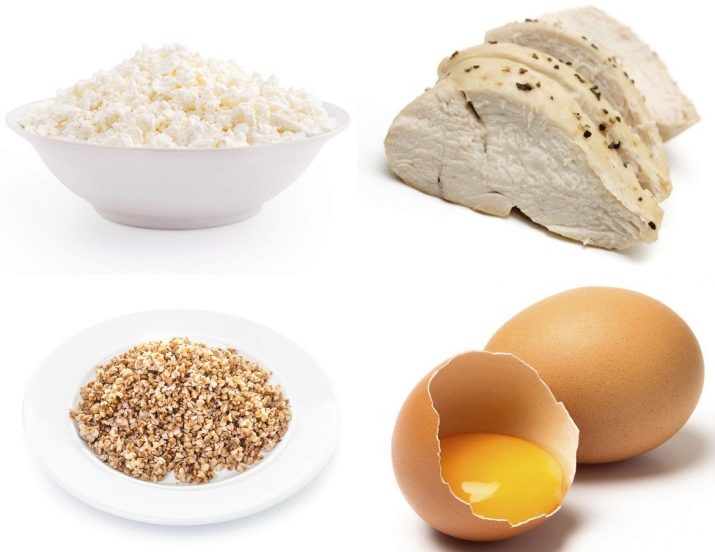
If you decide to feed the cat dry food, then choose only high-quality brands and buy them only in trusted stores.
It is also important to remember that you should create a regimen and a schedule of food intake. Feed the cat at the same time daily.
Remember to visit your veterinarian regularly for routine checkups. It is also necessary not to forget about the need for vaccinations, the systematic removal of worms from the body (family members should also drink courses of helminth tablets), and insect repellent treatment (for example, fleas).
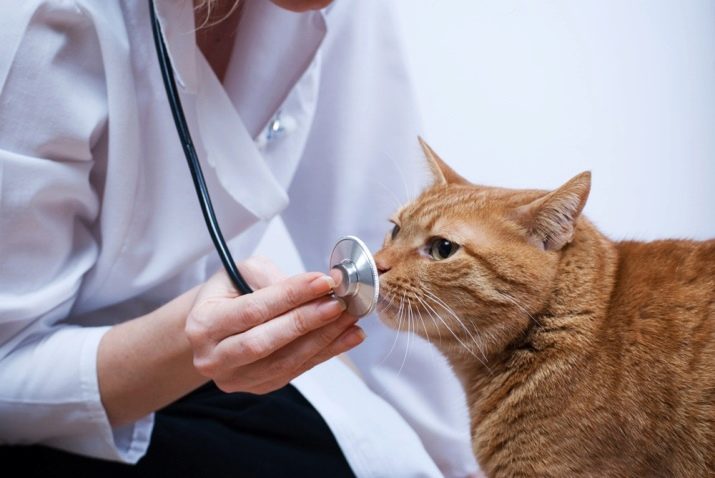
In addition, in connection with such an unusual coloring of light tones, it is important to observe the hygiene of the cat. It must be bathed and combed. Bathing should be carried out in case of severe pollution and using specially designed hygiene products. Combing is a more regular procedure that needs to be done at least once a week. Use special combs and brushes. Also do not forget about clipping.
Read more about the golden British cat and its care in the next video.
